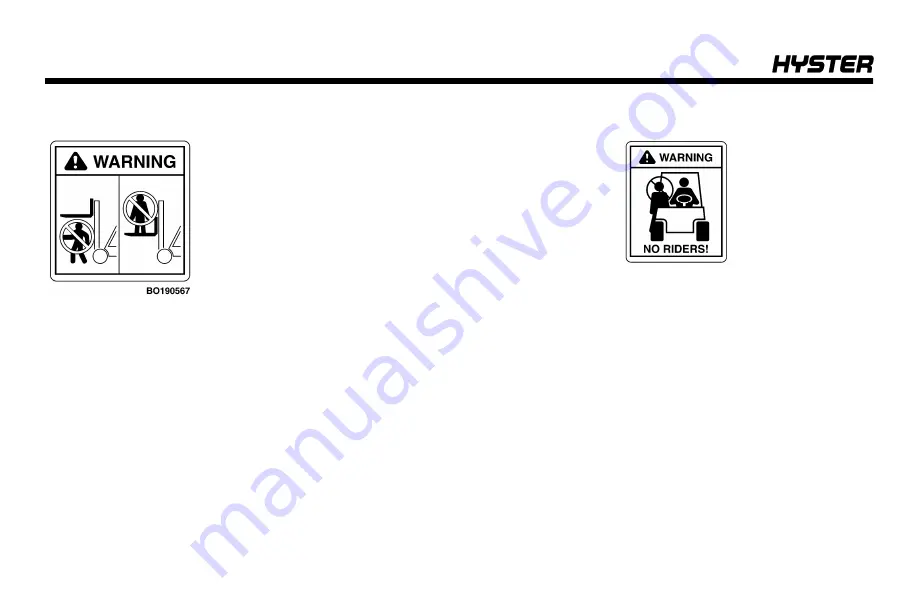
work platforms, aerial baskets, etc.) to perform the nee-
ded work.
If a lift truck is used to elevate a
worker, a safety platform must
be attached to the forks and car-
riage. The platform must be spe-
cially built to meet or exceed the
requirements of ITSDF B56.1. It
must have a solid floor with a
surface to prevent the feet of the
worker from slipping, hand rail,
toe board, and a screen or shield
at least 2 m (7 ft) high between the people on the plat-
form and the lift mechanism.
The combined weight of the platform, load, and person-
nel is not to exceed one-half of the capacity as indica-
ted on the nameplate of the truck on which the platform
is used.
Before anyone is allowed in the platform, lift and lower
the mast slowly with the platform in place to make sure
the mast functions properly. Apply the parking brake.
Do not travel with people in the platform. The operator
must remain at the controls. Watch for overhead
obstructions.
3. No Riders -
A lift truck is built for only one person -- the
operator. It is dangerous for anyone to ride on the forks or
anywhere else on the lift truck.
4. Adjust Seat - Internal Suspension.
Seat Position Adjustment (Swivel Seat)
•
The seat swivels 10.5 degrees to the right to allow the
operator a more ergonomic position when driving in
reverse.
•
The seat swivels 5 degrees to the left to allow an easier
exit of the truck.
•
The neutral position is shown in
Operating Procedures
106
Property of American Airlines






























